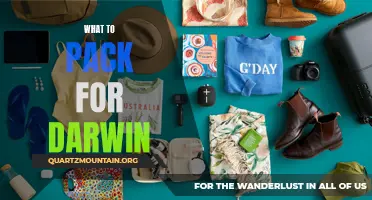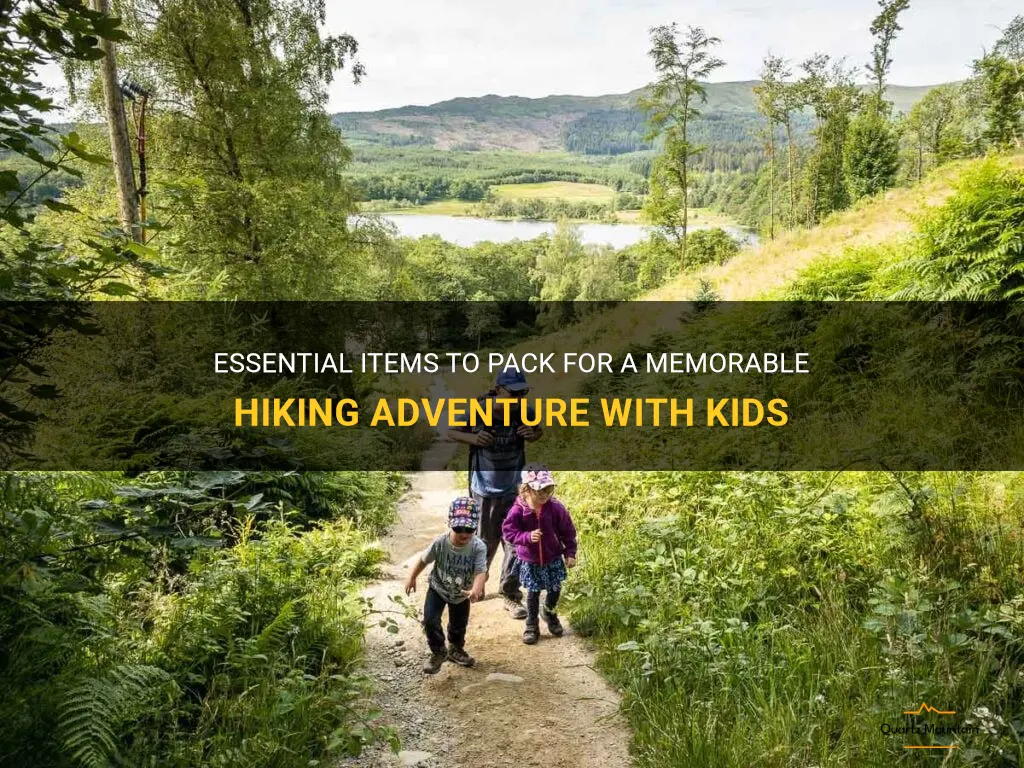
Heading out on a hiking adventure with your kids can be an incredible experience, full of exploration, bonding, and creating memories that will last a lifetime. But before you hit the trails, it's important to make sure you have all of the essential items packed. From sturdy hiking boots to snacks to keep little ones energized, this guide will help you ensure that your family's hiking adventure is one for the books. So grab your backpacks and get ready for a memorable outdoor expedition with your children!
What You'll Learn
- What are the essential items to pack when hiking with kids?
- How do I determine the appropriate clothing to pack for a hike with kids?
- Are there any specific safety items I should bring when hiking with children?
- What snacks and drinks should I pack to keep kids energized during a hike?
- How do I pack efficiently and keep the weight of the backpack manageable for both myself and my children?

What are the essential items to pack when hiking with kids?

Hiking is a great activity for families, providing an opportunity to spend quality time outdoors and explore nature. However, when hiking with kids, it's important to be well-prepared and ensure you have all the essential items to keep them safe and comfortable throughout the hike. Here is a list of the must-have items to pack when going on a hike with kids:
- Proper footwear: Invest in a pair of sturdy and comfortable hiking boots or shoes for your child. Make sure they fit well and provide good support to their feet. Ill-fitting footwear can quickly lead to discomfort and blisters, spoiling the hiking experience.
- Clothing layers: Dress your child in layers, so they can adjust their clothing according to the weather conditions. Start with a moisture-wicking base layer to keep them dry, add a mid-layer for insulation, and top it off with a waterproof and windproof outer layer to protect them from the elements. Don't forget to pack extra clothes in case they get wet or dirty during the hike.
- Sun protection: Protect your child's delicate skin from the harmful effects of the sun by applying sunscreen generously and regularly. Pack a wide-brimmed hat to shield their face and neck from the sun's rays, as well as a pair of sunglasses to protect their eyes.
- Snacks and water: Hiking can be physically demanding, so it's important to keep your child well-nourished and hydrated. Pack a variety of healthy snacks such as fruits, granola bars, and trail mix to keep their energy levels up. Carry enough water for everyone, and encourage your child to drink regularly to prevent dehydration.
- First aid kit: Accidents can happen even on the most well-planned hikes, so it's crucial to have a well-stocked first aid kit. Include band-aids, antiseptic ointment, adhesive tape, pain relievers, and any necessary prescription medications your child may need.
- Navigation tools: If you plan on venturing into unfamiliar trails, it's essential to have a map, compass, or a GPS device. Teaching your child basic navigation skills can also be a fun and educational experience.
- Insect repellent: Protect your child from annoying and potentially harmful insect bites by applying a child-safe insect repellent before heading out. Consider packing a bug bite relief cream or gel as well, in case they do get bitten.
- Safety gear: Ensure your child wears a properly-fitting helmet if biking or climbing are part of your hiking plan. Reflective vests or clothing can help increase visibility, especially if you're hiking during low light conditions.
- Entertainment: Hiking can sometimes be tiring for young kids, so having some form of entertainment can help keep them engaged and motivated. Consider packing a small toy, a nature journal, or a camera for them to document their hiking adventures.
- Positive attitude and patience: Last but not least, packing a positive attitude and plenty of patience is essential when hiking with kids. Encourage them, praise their efforts, and take breaks when needed. Remember, the goal is to have a fun and enjoyable experience for everyone involved.
In conclusion, when hiking with kids, it's crucial to be well-prepared and pack the essential items to ensure their safety and comfort. By having the right footwear, clothing layers, sun protection, snacks, water, first aid kit, navigation tools, insect repellent, safety gear, and entertainment, you can create a memorable and enjoyable hiking experience for your family. So, pack your bags, gather your young adventurers, and embark on a thrilling hiking journey together.
Essential Packing Guide for a Memorable Month-Long Trip to Europe
You may want to see also

How do I determine the appropriate clothing to pack for a hike with kids?
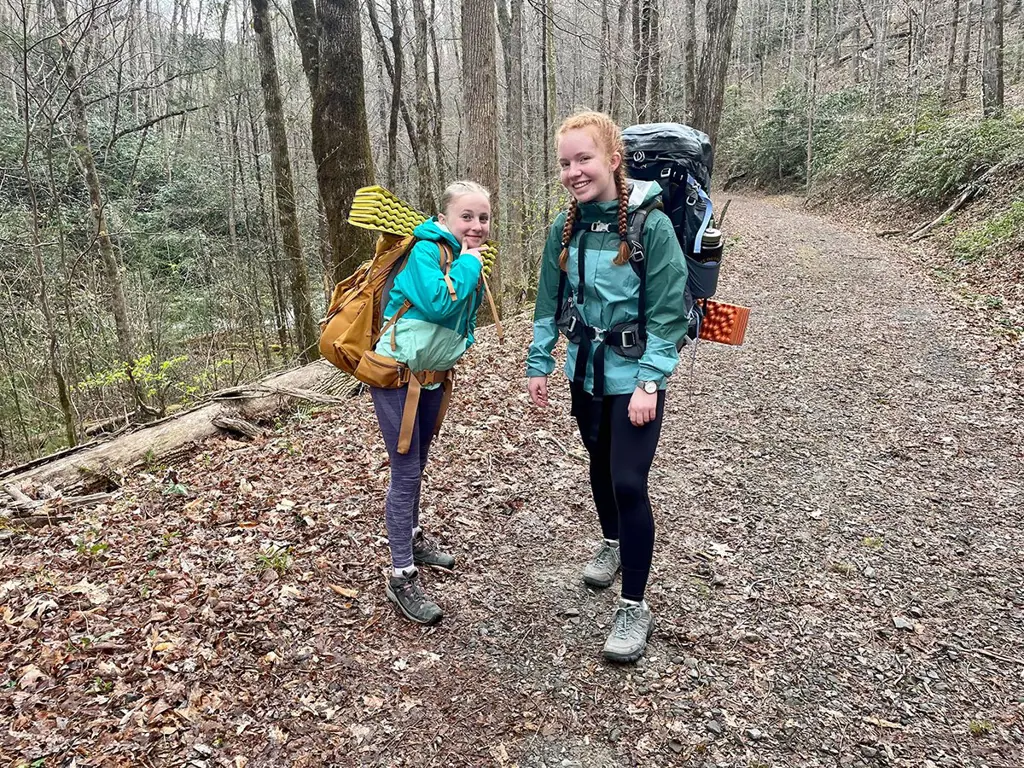
When planning a hike with kids, it's important to consider the appropriate clothing to pack. The right clothing can help keep kids comfortable and protected from the elements, ensuring a successful and enjoyable hike. Here are some tips on how to determine the appropriate clothing to pack for a hike with kids:
- Check the weather forecast: Before packing for your hike, it's essential to check the weather forecast for the area you'll be hiking in. This will give you an idea of the expected temperature, precipitation, and wind conditions. Based on the weather forecast, you can choose suitable clothing for your kids.
- Dress in layers: Layering is key when preparing for a hike with kids. Start with a base layer made of moisture-wicking material, such as polyester or merino wool. This layer will help keep your kids dry by wicking away sweat. On top of the base layer, add a mid-layer for insulation. This can be a fleece jacket or a lightweight down jacket. Finally, top it off with an outer layer that is waterproof and windproof. This can be a rain jacket or a shell jacket.
- Consider the terrain and duration of the hike: The terrain and duration of the hike will also play a role in determining the appropriate clothing. If you're hiking in a hot and sunny area, make sure to pack sun protective clothing, such as lightweight long-sleeved shirts and wide-brimmed hats. If you're hiking in a colder region, pack warm hats, gloves, and thermal socks to keep your kids warm. Additionally, if you'll be hiking for an extended period, consider packing extra socks and clothing to change into if they get wet.
- Don't forget about footwear: Choosing the right footwear is crucial when hiking with kids. Look for hiking boots or shoes that provide good traction and ankle support. Make sure the shoes are comfortable and properly fitted. Avoid open-toe sandals or shoes that don't provide adequate protection.
- Bring extra essentials: In addition to clothing, it's important to pack some extra essentials for your hike. Consider bringing a small backpack with essentials such as sunscreen, insect repellent, a hat, sunglasses, and a first aid kit. These items can help protect your kids from the sun, bugs, and minor injuries.
Example:
Let's say you're planning a hike with your kids in a mountainous area during the fall season. The weather forecast indicates that the temperature will range from 50 to 70 degrees Fahrenheit, with a chance of rain and strong winds. Based on this information, here's how you can determine the appropriate clothing to pack:
- Base layer: Pack moisture-wicking long-sleeved shirts and leggings for your kids. This will help keep them dry and comfortable.
- Mid-layer: Bring lightweight fleece jackets to provide insulation. These jackets can be easily added or removed depending on the temperature.
- Outer layer: Pack waterproof and windproof rain jackets for each child. Make sure the jackets have adjustable hoods and cuffs to provide maximum protection.
- Bottoms: Pack quick-drying and durable hiking pants for your kids. These pants should be comfortable and provide ample mobility.
- Footwear: Choose sturdy hiking boots for your kids. Look for boots that provide good traction and ankle support. Make sure they are properly fitted and broken-in before the hike.
By following these steps and considering the specific weather conditions and terrain, you can determine the appropriate clothing to pack for a hike with kids. Remember to layer clothing, pack extra essentials, and choose appropriate footwear to ensure a successful and enjoyable hiking experience for the whole family.
Essential Packing Tips for Hiking the West Highland Way
You may want to see also

Are there any specific safety items I should bring when hiking with children?
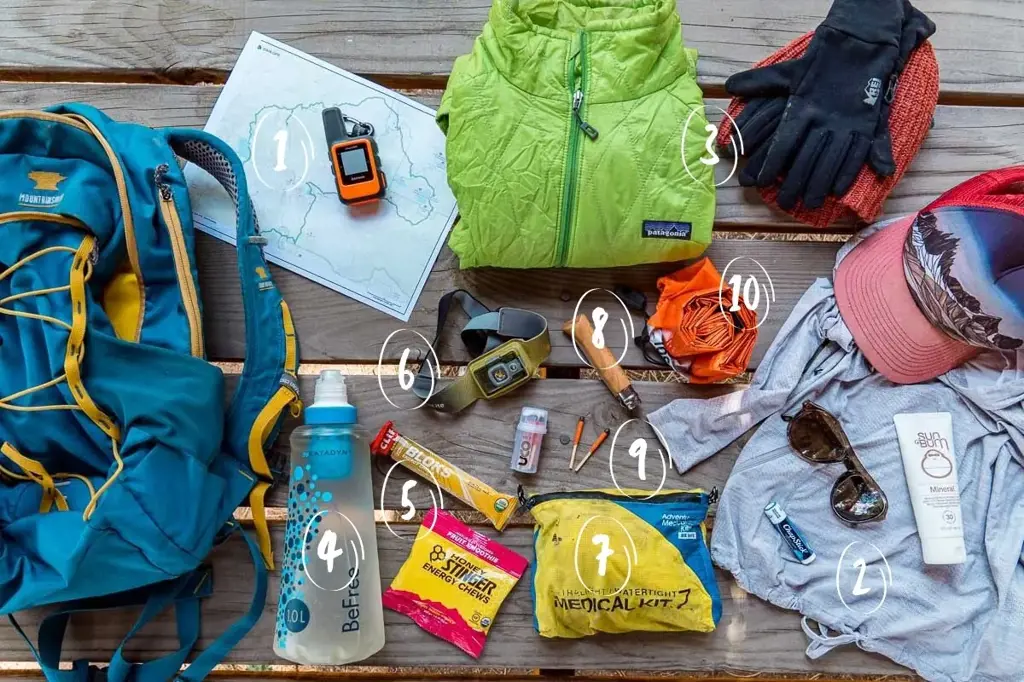
When hiking with children, safety should always be your top priority. As a responsible adult, it is important to ensure that you have all the necessary safety items to protect your children and keep them safe during the hike. Here are some specific safety items that you should bring when hiking with children:
- First Aid Kit: A well-stocked first aid kit is essential for any hiking trip, especially when children are involved. Make sure your first aid kit includes band-aids, antiseptic wipes, gauze pads, adhesive tape, scissors, tweezers, and any necessary medications. It is also important to know how to use the items in your first aid kit in case of an emergency.
- Sun Protection: Protecting your children from the sun is crucial when hiking. Bring sunscreen with a high SPF, sunglasses, and hats to protect their skin and eyes from UV rays. It is also important to reapply sunscreen every few hours, especially if you are hiking for a long duration.
- Insect Repellent: Depending on the location and season, insects can be a nuisance and carry diseases. It is important to bring insect repellent to protect your children from mosquito bites and other insect-related issues. Look for child-friendly and DEET-free repellents that are safe to use on children.
- Extra Clothing: Children may get wet or dirty during the hike, so it is always a good idea to bring extra clothing. Pack extra socks, shirts, and pants to change into if needed. It is also important to dress them in layers, so they can adjust their clothing according to the weather conditions.
- Food and Water: Hiking can be physically demanding, and children may require more frequent breaks and snacks. Pack plenty of snacks and water to keep them hydrated and energized throughout the hike. It is advisable to carry lightweight and easy-to-carry snacks that are high in nutrients.
- Navigation Aids: Having a map, compass, or GPS device can be helpful in case you get lost or deviate from your planned route. Teach your children basic navigation skills and involve them in the map-reading process. This not only keeps them engaged but also helps them develop important skills.
- Whistle: A whistle is a simple yet effective safety item that can be easily carried by children. Teach them how to use the whistle in case they get separated from the group or encounter any danger. The sound of a whistle can travel much farther than a voice, making it easier to locate someone in need of help.
- Emergency Contact Information: Ensure that you have a list of emergency contact numbers, including local authorities and family members, in case of an emergency. Share this information with your children and teach them how to use a phone or a communication device if needed.
Remember, it is important to tailor your safety items based on the age and abilities of your children. Always assess the hiking trail and weather conditions before heading out and make necessary preparations. By being well-prepared and having the right safety items, you can help ensure a safe and enjoyable hiking experience for you and your children.
The Ultimate Checklist: Essential Items to Pack for Rolling Loud Music Festival
You may want to see also

What snacks and drinks should I pack to keep kids energized during a hike?
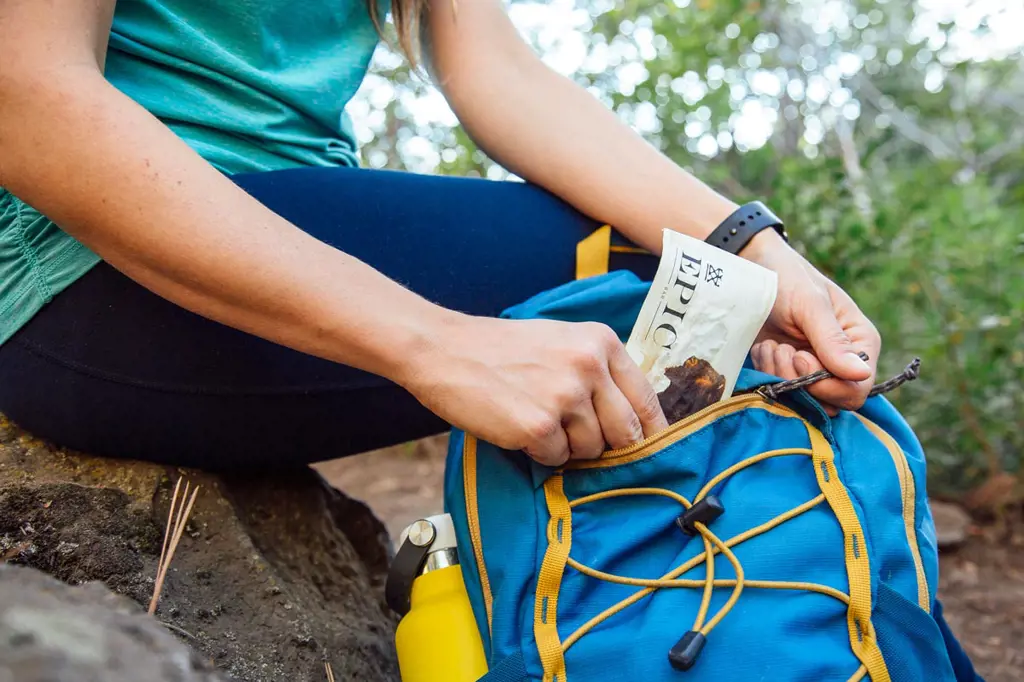
When planning a hike with kids, it's important to pack snacks and drinks that will keep them energized and hydrated throughout the day. Choosing the right snacks can help prevent fatigue and keep their energy levels up. Here are some tips for packing snacks and drinks for a hike with kids.
Choose nutrient-dense snacks:
When packing snacks for a hike, opt for foods that are high in nutrients and provide sustained energy. Avoid sugary snacks that can cause a quick energy spike followed by a crash. Instead, choose snacks that are rich in protein, healthy fats, and complex carbohydrates. Some good options include trail mix, nuts and seeds, granola bars, and whole grain crackers.
Include fruits and vegetables:
Fruits and vegetables are excellent choices for hiking snacks as they provide essential vitamins and minerals. Pack portable options like apples, bananas, carrots, and cherry tomatoes. These snacks not only offer energy but also help keep kids hydrated due to their high water content.
Hydration is key:
Staying hydrated is crucial during a hike, especially for kids who may be more susceptible to dehydration. Encourage kids to drink water regularly throughout the hike. You can also pack flavored water or natural fruit juices, but avoid sugary drinks and sodas.
Pack easy-to-eat snacks:
Choose snacks that are easy to eat on the go and require minimal preparation. Avoid snacks that need refrigeration or spoil easily. Portable options like pre-cut fruits and vegetables, cheese sticks, and small sandwiches or wraps are a great choice.
Consider dietary restrictions:
If any of the kids have specific dietary restrictions or allergies, make sure to pack snacks that cater to their needs. There are plenty of allergen-free options available in stores, or you can make your own snacks at home. It's important to check food labels to ensure they are safe for consumption.
Keep it fun:
Make the snack time during the hike enjoyable by including some treats or special snacks that kids look forward to. This can be a small bag of chips, a piece of chocolate, or their favorite cookies. It's important to strike a balance between healthy snacks and occasional treats to keep the hike fun and exciting for the kids.
Remember to pack enough snacks and drinks to last the entire hike, and consider the duration and intensity of the hike when planning the quantity. It's always better to have more than not enough, as kids tend to get hungry and thirsty more frequently. Additionally, pack the snacks and drinks in a backpack or cooler to keep them fresh and easily accessible. With the right snacks and drinks, you can ensure that your kids stay energized and have an enjoyable hiking experience.
Essential Items to Pack for a Memorable Day Hike
You may want to see also

How do I pack efficiently and keep the weight of the backpack manageable for both myself and my children?
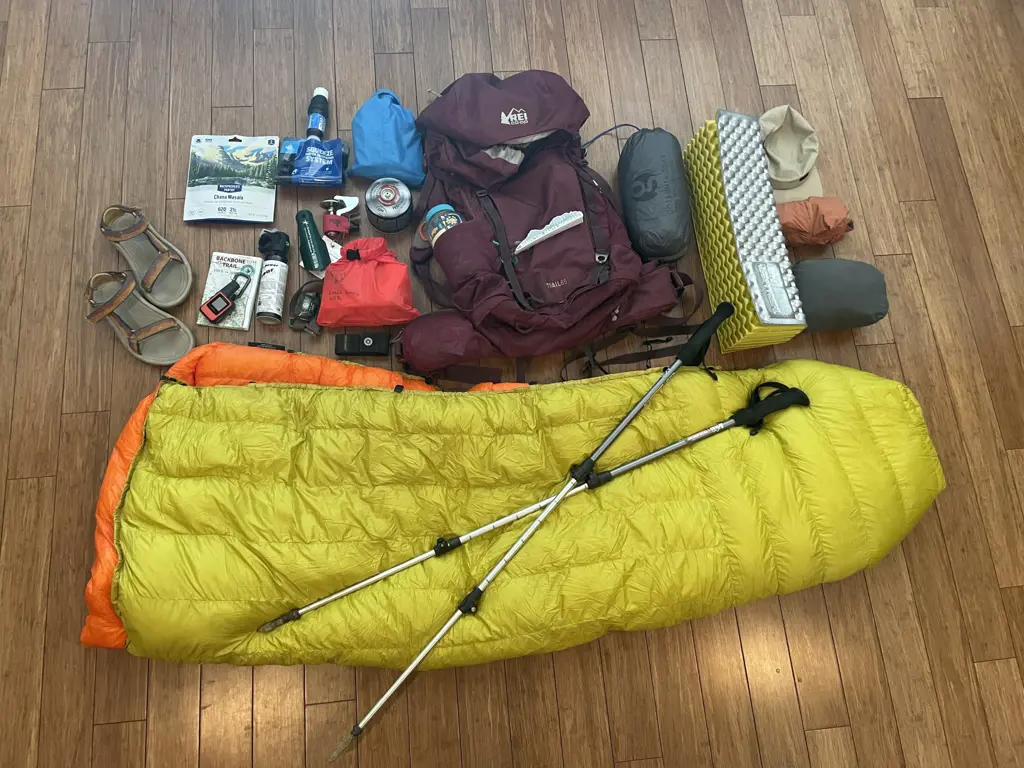
Packing efficiently and keeping the weight of the backpack manageable is essential, especially when traveling with children. It not only ensures ease of movement but also helps prevent strain and fatigue. By following a few simple steps and applying some effective packing techniques, you can make your family trips much more enjoyable.
- Create a packing checklist: Before you start packing, make a list of all the essential items you and your children will need. Divide the list into categories like clothing, toiletries, first aid, entertainment, and snacks. Having a checklist will help you stay organized and ensure you don't forget anything important.
- Choose lightweight and versatile items: Opt for lightweight clothing and accessories that can be layered for different weather conditions. Look for multi-purpose items like a quick-drying towel that can also serve as a picnic blanket or a sarong that can double as a beach cover-up. Lightweight and compact toiletries, such as travel-sized containers, are also ideal for reducing weight.
- Roll your clothes: Instead of folding your clothes, roll them tightly. This not only saves space but also helps prevent wrinkles. Rolling clothes also allows you to see everything in your backpack at once, making it easier to locate specific items without unpacking everything.
- Distribute weight evenly: When packing your backpack, distribute the weight evenly to maintain balance. Place heavier items closer to your back and center of gravity. This helps prevent strain on your back and shoulders. Additionally, use packing cubes or compression sacks to organize and compress your belongings, maximizing space and reducing bulk.
- Minimize duplicate items: Avoid bringing unnecessary duplicate items. Consider sharing some items with your children, such as toothpaste, sunscreen, or bug repellent. It's also a good idea to pack travel-sized versions of products to save space and weight.
- Leave non-essential items at home: Be mindful of the items you pack and question their necessity. If you're unsure if you'll need something, consider leaving it behind. Traveling light allows for more flexibility and less strain on your body.
- Use technology wisely: Instead of carrying heavy books or bulky entertainment items, use digital alternatives. Load e-books, movies, or games on lightweight devices like tablets or e-readers to keep your children entertained without adding extra weight to your backpack.
- Be strategic with snacks: Packing snacks is essential when traveling with children. Opt for lightweight and nutritious options like granola bars, dried fruits, or nuts. Choose snacks that won't be easily crushed or damaged, and pack them in an easily accessible pocket or compartment.
By employing these packing techniques, you can ensure that your backpack remains manageable and that both you and your children can enjoy your trip without feeling weighed down. Remember, the goal is not only to travel efficiently, but also to have a great time bonding and creating lasting memories with your family.
Essential Items to Pack for Your June Trip to California
You may want to see also
Frequently asked questions
When hiking with kids, it's important to pack several essential items to ensure everyone's safety and comfort. These include proper clothing and footwear, plenty of water and snacks, sunscreen and bug spray, a first aid kit, a map and compass, and a whistle or other signaling device.
Yes, it's always a good idea to bring extra clothing for kids when hiking. Kids are more prone to getting wet or dirty while exploring, so having spare clothes can ensure they stay comfortable throughout the hike. Pack extra socks, pants, and shirts in case they get wet or dirty.
When hiking with kids, it's important to stay hydrated. The amount of water you should bring depends on the length and intensity of the hike, as well as the age and activity level of your children. As a general guideline, aim to bring at least one liter of water per person for every two hours of hiking. If you're unsure, it's always better to bring more water than you think you'll need.
When hiking with kids, it's important to pack snacks that are both nutritious and easy to eat on the go. Some great options include trail mix, granola bars, fresh fruit, and carrot sticks. Avoid snacks that can easily melt or get squished, as they may become messy and unappetizing.
Yes, it's essential to bring a first aid kit when hiking with kids. Accidents can happen, and having basic first aid supplies on hand can help treat minor injuries and provide peace of mind. Your first aid kit should include band-aids, antiseptic wipes, gauze pads, adhesive tape, tweezers, and any necessary medications your children may need.





